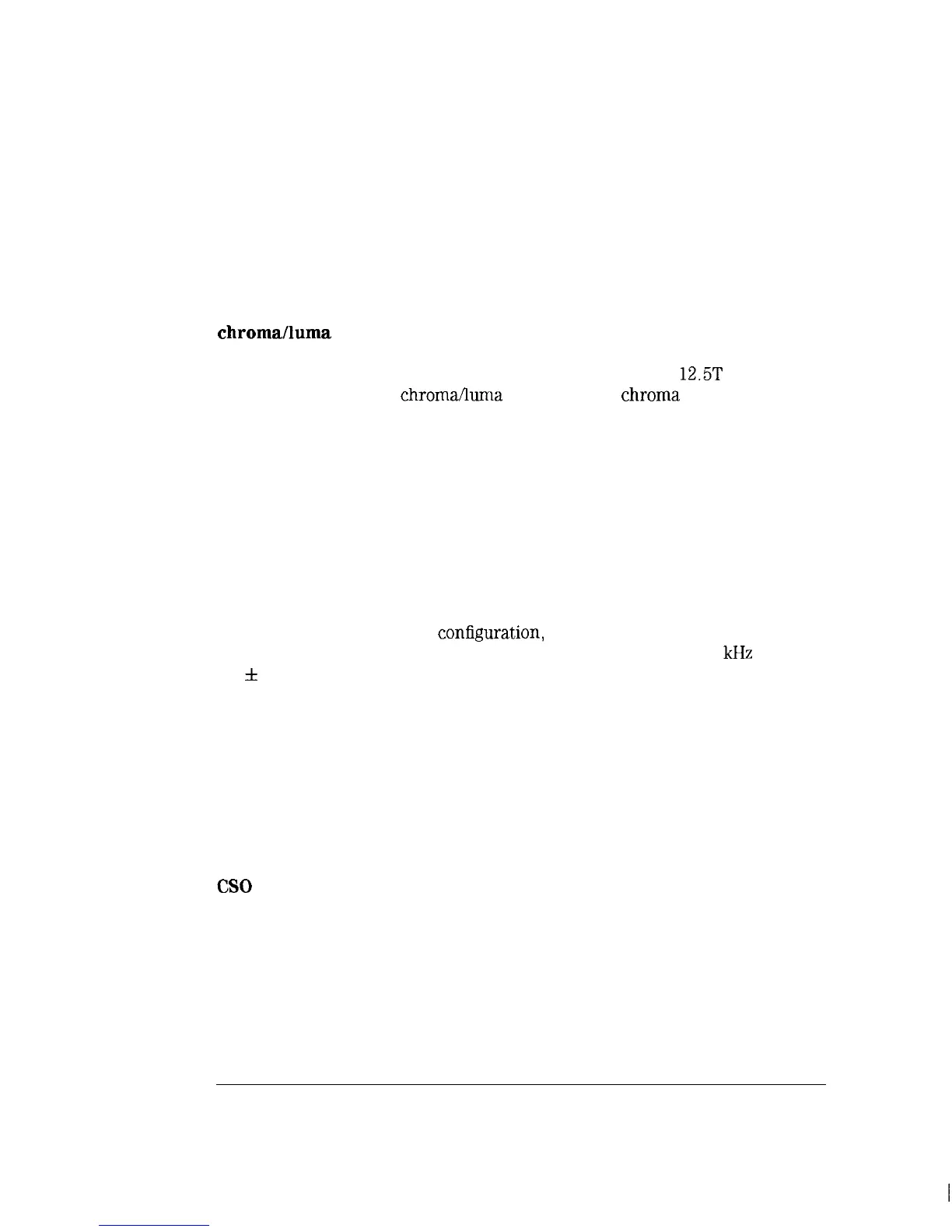I
-
character set
The set of elementary symbols. These normally include both alpha and
numeric codes, plus punctuation or any other symbol that may be read,
stored, or written and used for organization, control, or representation of
data.
chroma/luma
delay inequality
This is the tune delay between the low frequency luminance component
and the high frequency chrominance component of the
12.5T
pulse in the
test signal. Positive
chroma/luma
delay is when chroma lags luma in time.
command
A set of instructions that are translated into instrument actions. The
actions are usually made up of individual steps that together can execute
an operation. Generally, for analyzers it is a sequence of code that
controls some operation of an analyzer. These codes can be keyed in via a
controller, or computer. Refer also to function.
composite second order beat
Composite second order beat (CSO) is the ratio of the composite second
order beat products to the peak level of the visual carrier. For a system
using the standard tune conEguration, the composite second order
beat products are the distortion products that occur at f750
kHz
and
f
1.25 MHz around the visual carrier.
composite triple beat
Composite triple beat (CTB) is the ratio of the composite triple beat
products to the peak level of the visual carrier. The composite triple beat
products are distortion products that occur at the visual carrier frequency.
continuous sweep mode
The analyzer condition where traces are automatically updated each time
trigger conditions are met.
cso
Refer to composite second order beat
CTB
Refer to composite triple beat.
Glossary-4

